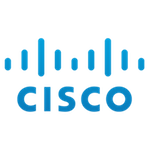Bold Investments Changing the Future of Social Good
Produced by (E) BrandConnect

Cisco Blog | Corporate Social Responsibility
Whether addressing income inequality or access to vital resources such as water, food, or healthcare, lasting change only starts with a committed investment or partnership. Reaching a meaningful end goal requires a sustained effort — dependent on an approach that is strategic, evidence-based, partner-centric and sustainable.
If this sounds familiar, it’s because it is: The success of executives and entrepreneurs alike depends on developing a business model that delivers value and sustains an organization. With this in mind, the role companies are playing in innovating solutions to global challenges feels intuitive, even if it seems surprising at first.
Today, companies are committing their expertise to harness the expanding options for high-impact social investment — from mission-related investing to venture capital-like approaches. In the process, they’re unveiling distinct opportunities to align purpose and profitability and developing tools and talent for a new generation of changemakers.
Impact investing delivers social and financial returns
From 2013-2015, the impact-investing market — providing both financial and social/environmental returns — grew 18% compounded annually to $35.5 billion, according to the Global Impact Investing Network (GIIN); GIIN annually surveys impact investors such as fund managers and foundations. The volume of capital raised by fund managers also increased at a compounded rate of 18% each year, growing from $1.7 billion in 2013 to $2.3 billion in 2015. The GIIN report showed that 98% of respondents surveyed indicated impact performance was in line with or exceeded their expectations; 85% to 95% of respondents surveyed said financial results were in line with or better than their expectations.
A growing number of impact-investing options enable investors of all sizes to balance their ideal level of risk with targeted social and financial returns. For example, “program-related investments” (PRIs) provide capital to beneficiaries at favorable rates while enabling organizations to realize a return on charitable donations. Since 2009, through PRIs, the Bill & Melinda Gates Foundation has made nearly 50 loans, equity investments and guarantees (totaling more than $1 billion) to further the foundation’s charitable purpose — making the world’s largest foundation one of the world’s largest impact investors.
The results have been diverse benefits for communities that often go underserved: As a Stanford Social Innovation Review report noted, these range from biotech innovations in developing companies to M-KOPS, a Nairobi start-up that sells solar lighting and mobile phone charging systems on a pay-as-you-go basis. Additionally, in spring of 2017, the Ford Foundation announced a commitment to “mission-related” investing, allocating $1 billion from its endowment to test the waters in a more financially driven impact-investing model.
Bringing a venture capital-like approach to social investments
Cisco is inspired by the potential of digitization to accelerate solutions to global problems faced in communities across the world. In 2015, the company announced a goal to positively impact 1 billion people with its Corporate Social Responsibility programs by 2025.
Central to achieving this ambitious goal is a start-up-like investment model: The company invests in early-stage nonprofit solutions leveraging technology to address social and environmental challenges. The key is that they have the potential to scale, replicate, and become financially sustainable, thus multiplying Cisco’s impact. This model places Cisco as one of only a few stakeholders to invest at the most critical —and riskier— early-stages.
“There is a dearth of funding to design and test new solutions or for experimentation,” says Peter Tavernise, Executive Director of the Cisco Foundation and Director of Cisco Public Benefit Investment. “We wanted to concentrate our resources on where the need is highest, which is in this experimentation and pilot-program area. Of course, you have to be willing to take higher risks and learn from both successes and failures.”
Cisco builds its portfolio of strategic social investments around three main priorities where research and stakeholder insights have shown they can have the most impact: educational opportunity, economic empowerment, and critical human needs/disaster response.
One example is Ushahidi, which offers open source, crisis-mapping software, which Cisco helped build. Such software enables those in disaster zones to share information and reports. The Ushahidi platform has been used in more than 140 countries, through more than 100,000 deployments, and has reached more than 20 million people since Cisco’s began its support in 2009. More recently, Cisco has supported the development of Ushahidi Responder, a tool built on the Ushahidi platform that helps relief agencies gather real-time information, triage, and more effectively and efficiently respond to needs on the ground.
“We approach social impact like any other function of our business: We apply in-depth research, rigorous analysis, and our core competencies as a global IT company to develop impactful investments,” says Tae Yoo, SVP Corporate Affairs & CSR.
The company’s CSR strategy — and reaching its 2025 goal — also includes partnerships to create curriculum, experiences, and engagement models that promote an entrepreneurial and innovative mindset. For example, Cisco hosts and sponsors innovation challenges and prizes where students win seed money to start, grow or launch ventures that benefit society and the environment. The winner of Cisco’s 2017 Global Problem Solver Challenge was Project Vive, which gives a voice to the voiceless through its low-cost speech-generating devices (SGD) such as their Voz Box — an affordable and wearable device for those with cerebral palsy and other communication-related disabilities.
A new generation of global problem solvers
At the heart of Cisco’s approach to maximizing social impact is the concept of fostering a generation of “global problem solvers” — next-generation, mission-driven professionals of all ages who innovate as technologists, think as entrepreneurs, and act as social change agents. Not only do they address the issue at hand, they also envision how their solutions and techniques can be applied on a larger scale, harnessing the power of technology to help more people and society as a whole.
“We’re really thinking about what motivates young people,” says Mary de Wysocki, Cisco’s Senior Director of Corporate Affairs. “One of the most frequent questions we get from potential employees is: ‘What are you doing in the community?’”
Indeed, a 2016 Cone Communications study found that 64% of millennials consider a company’s social and environmental commitments when deciding where to work; nearly two-thirds won’t take a job if the company doesn’t have strong CSR values. These are sobering statistics, considering that millennials are now the largest generation in the workforce and will be half of all employees in the U.S. by 2020.
Engaging and cultivating talent like this has a positive impact on both the individual company and society as a whole. Savvy leaders recognize that a quiet revolution has taken place in how a company’s value is measured: In 1975, financial assets (tangibles) made up 83% of the value given to a corporation (vs. 17% intangibles/non-financial such as human capital, intellectual capital, brand equity, reputation, etc.).
By 2015, this had significantly changed, with intangibles making up 84% of a corporation’s value. Nurturing talent also helps to create a future where there’s a workforce ready to start new businesses, create new jobs and bring fresh perspectives to existing organizations — all with an understanding of how to make a positive social impact.
As these examples show, business ingenuity is helping to fuel a variety of sustained efforts for change. “These investments that we and others are collectively making can inspire generations of global problem solvers to come — generations who are grounded in their communities, with a strong sense of purpose and social mission. We anticipate that this will result in a plethora of solutions to the some of the most pressing issues,” says Ms. Yoo.
Produced by (E) BrandConnect, a commercial division of The Economist Group, which operates separately from the staffs of The Economist and The Economist Intelligence Unit. Neither (E) BrandConnect nor its affiliates accept any responsibility or liability for reliance by any party on this content.

